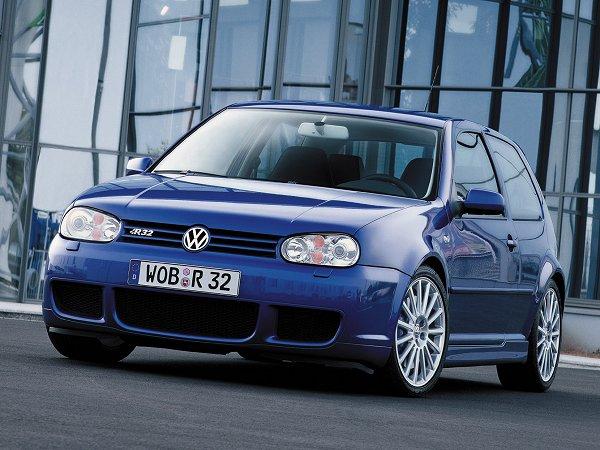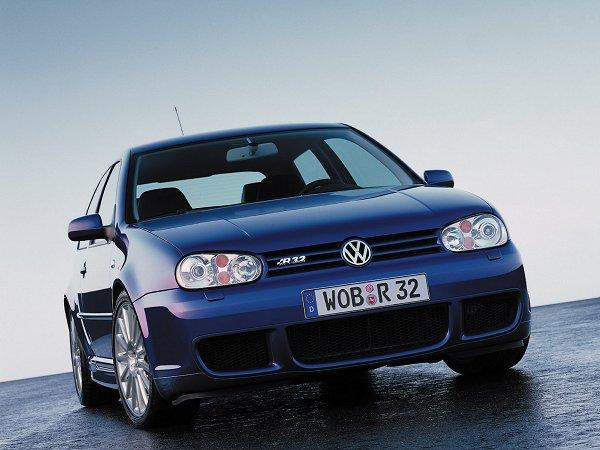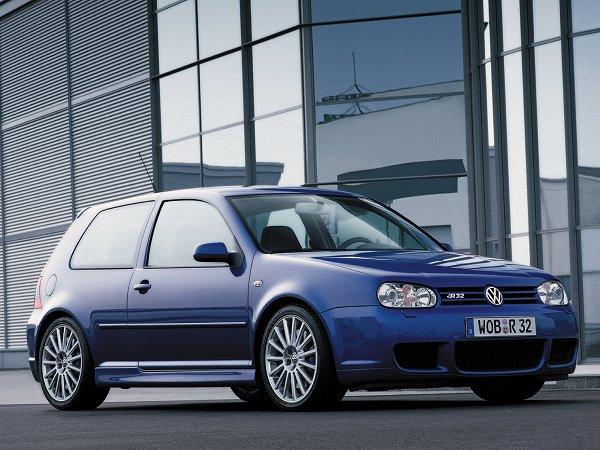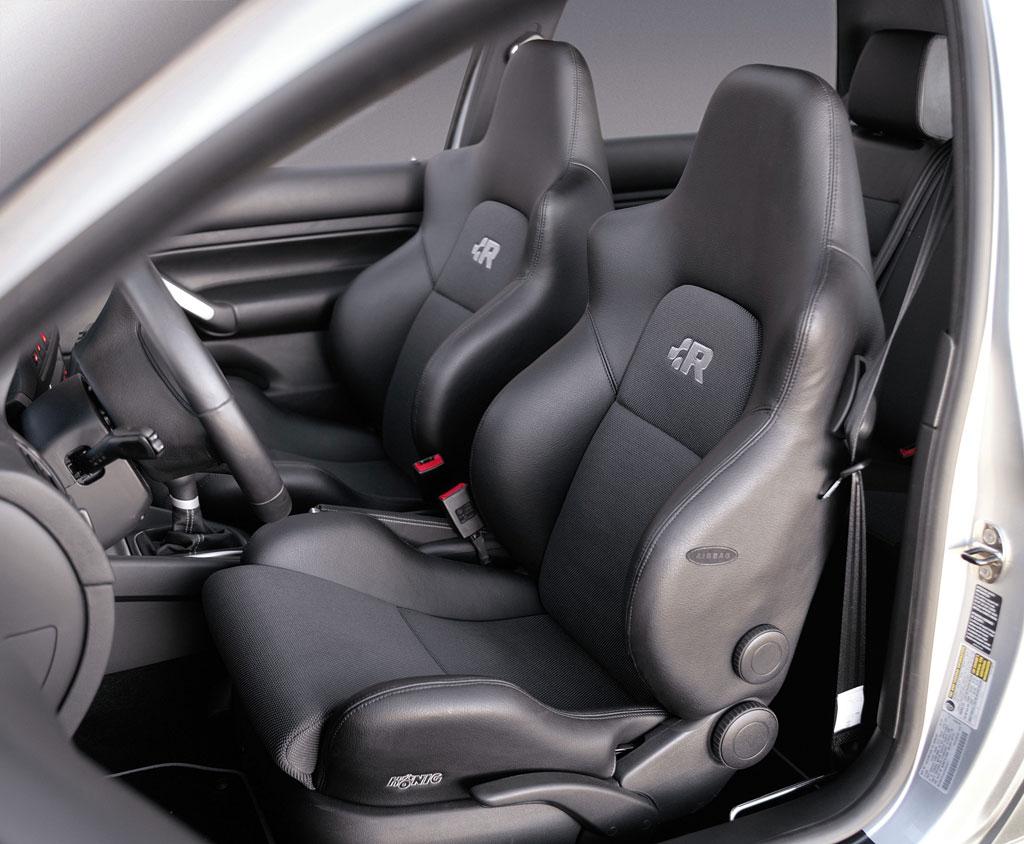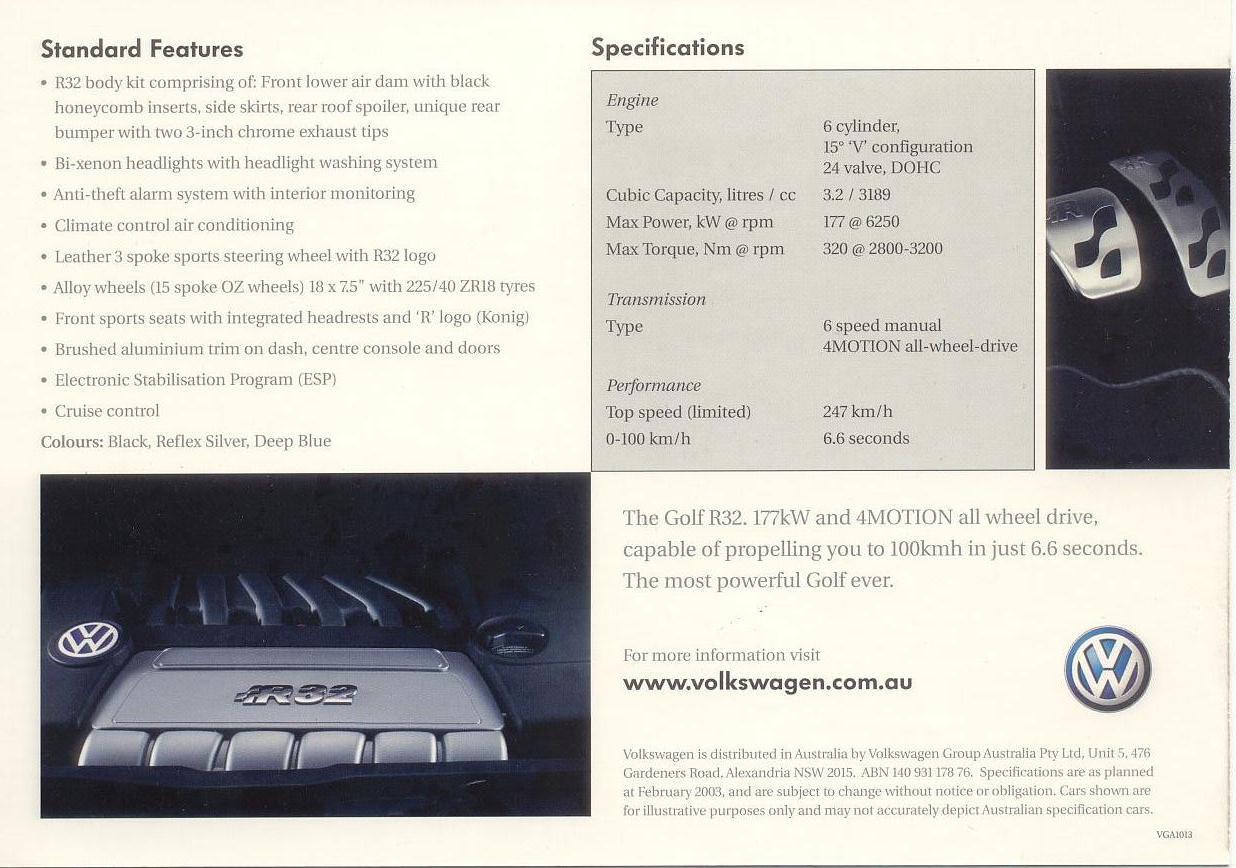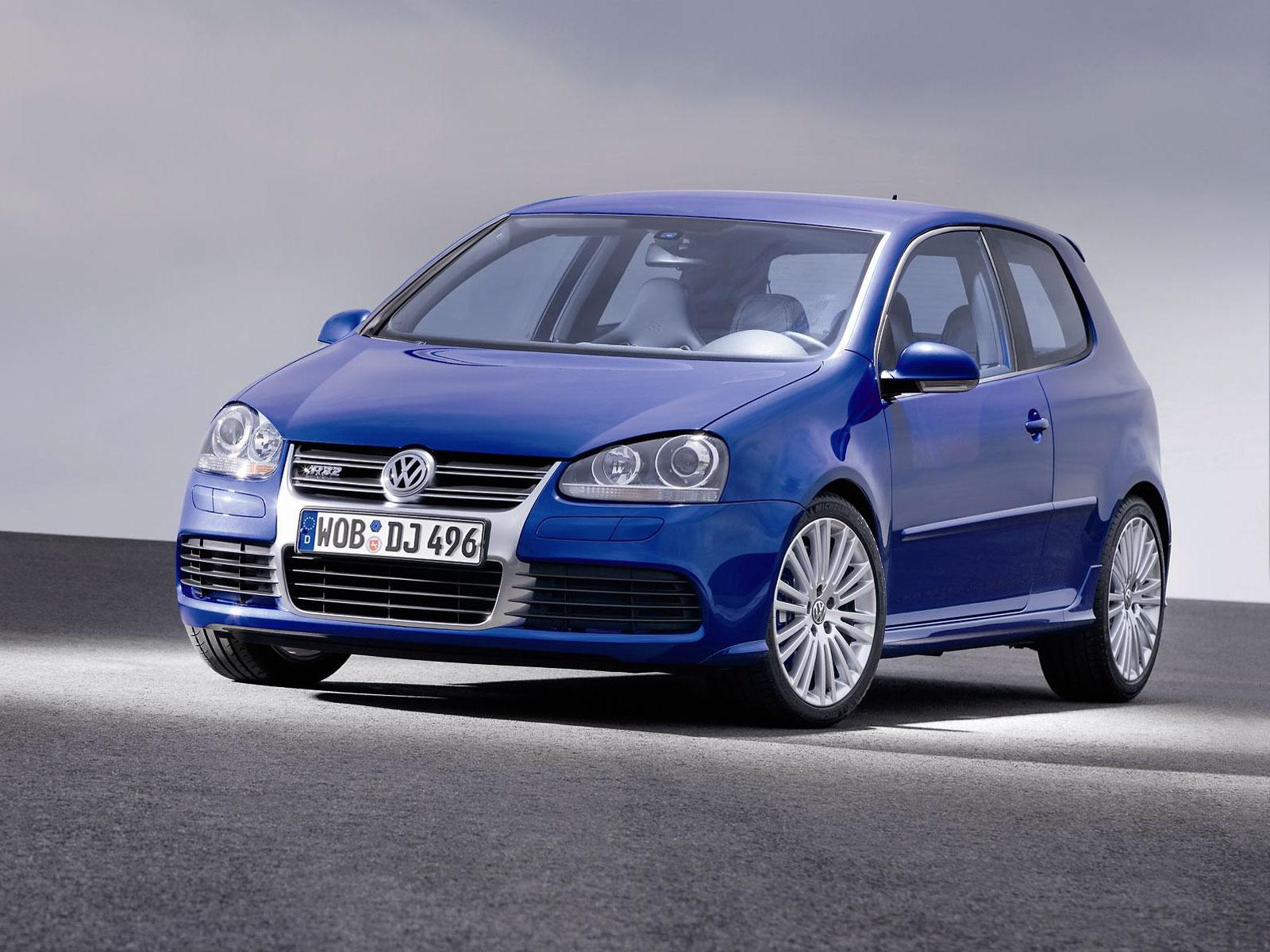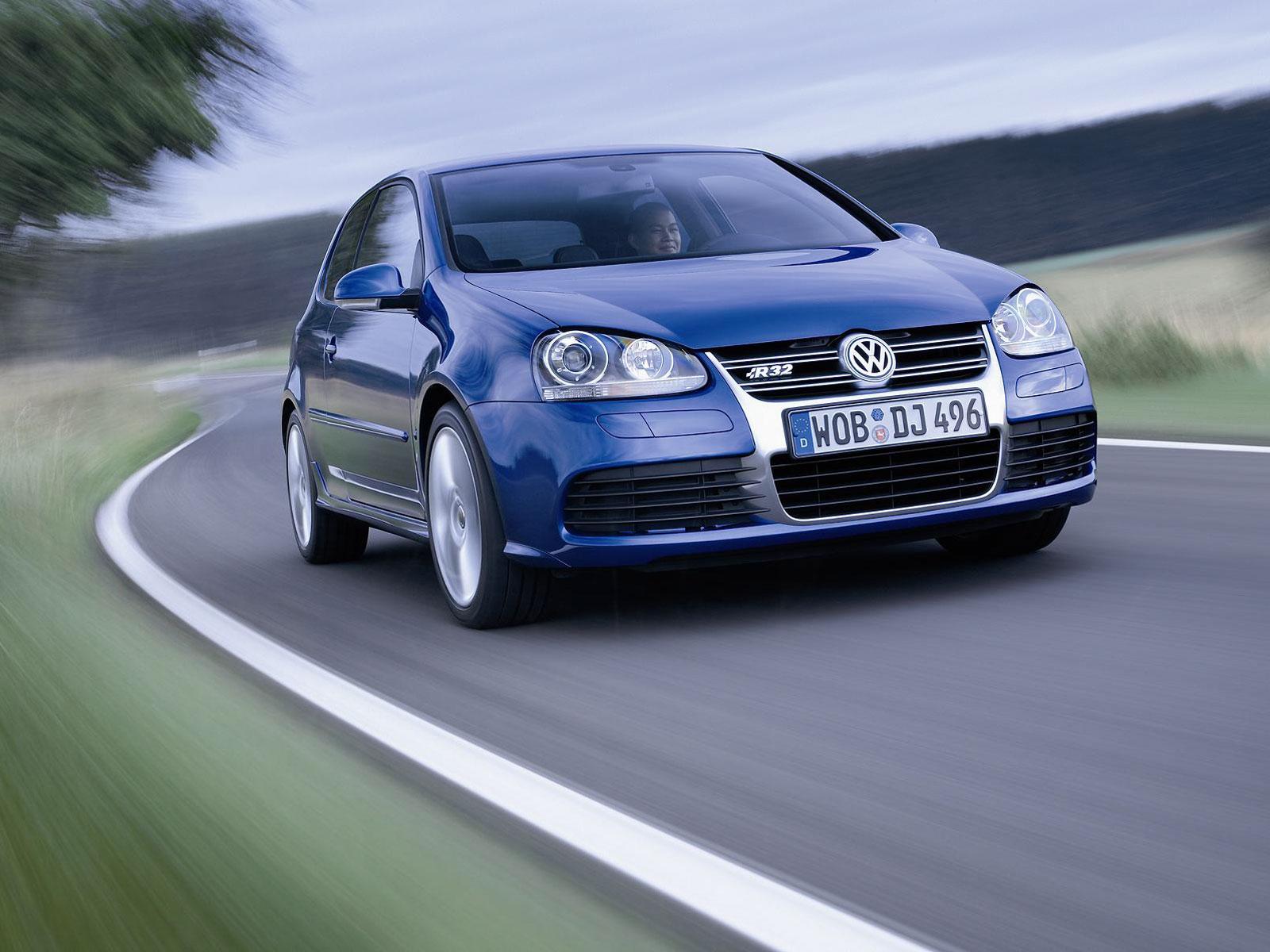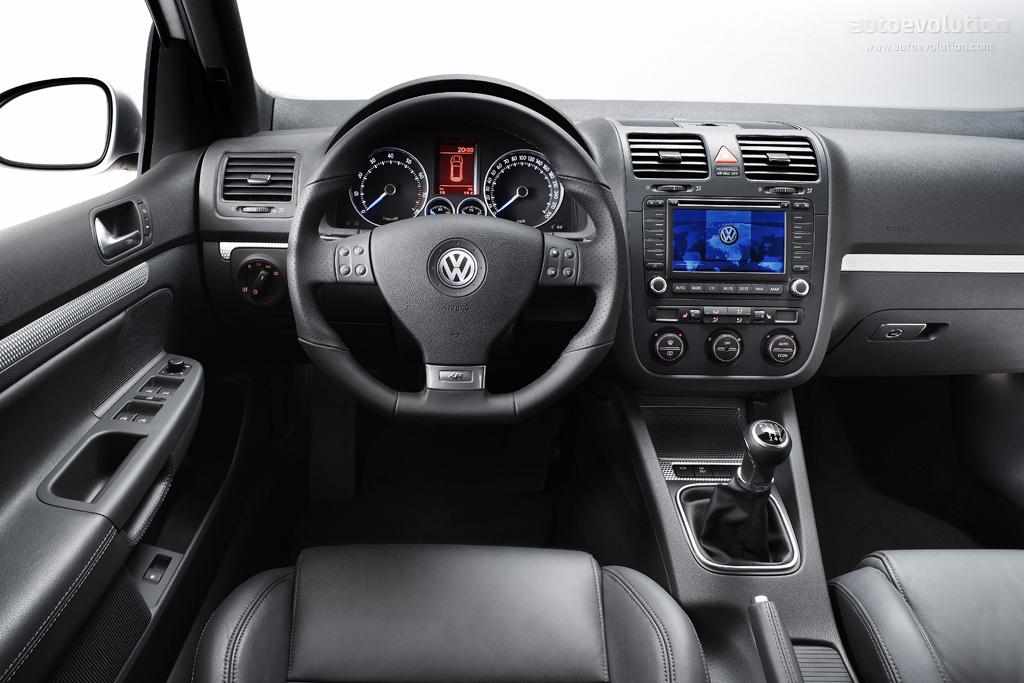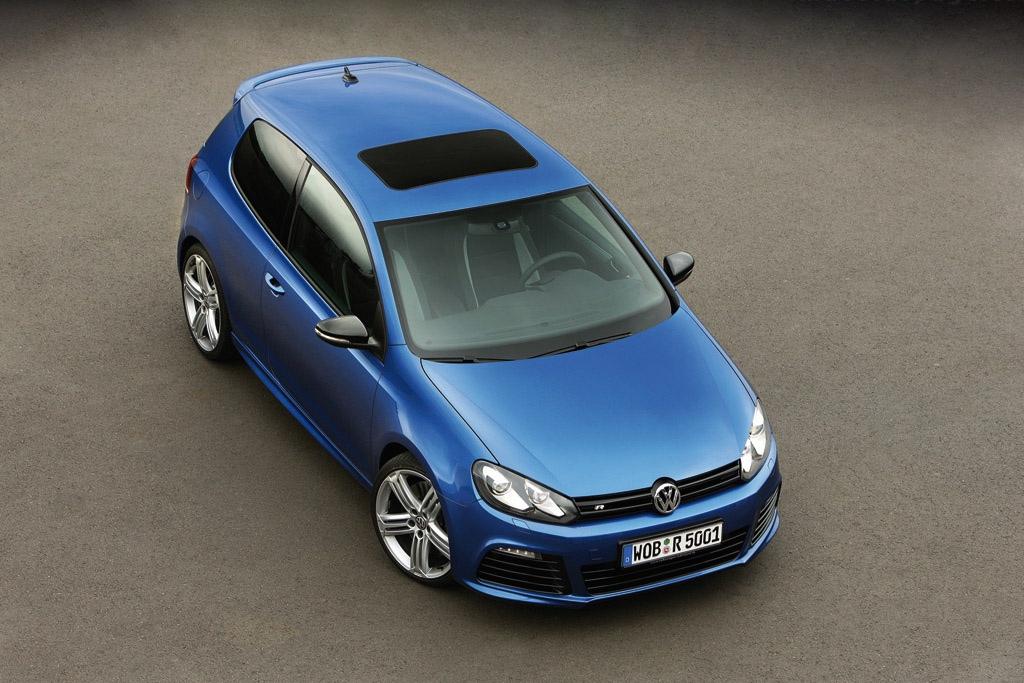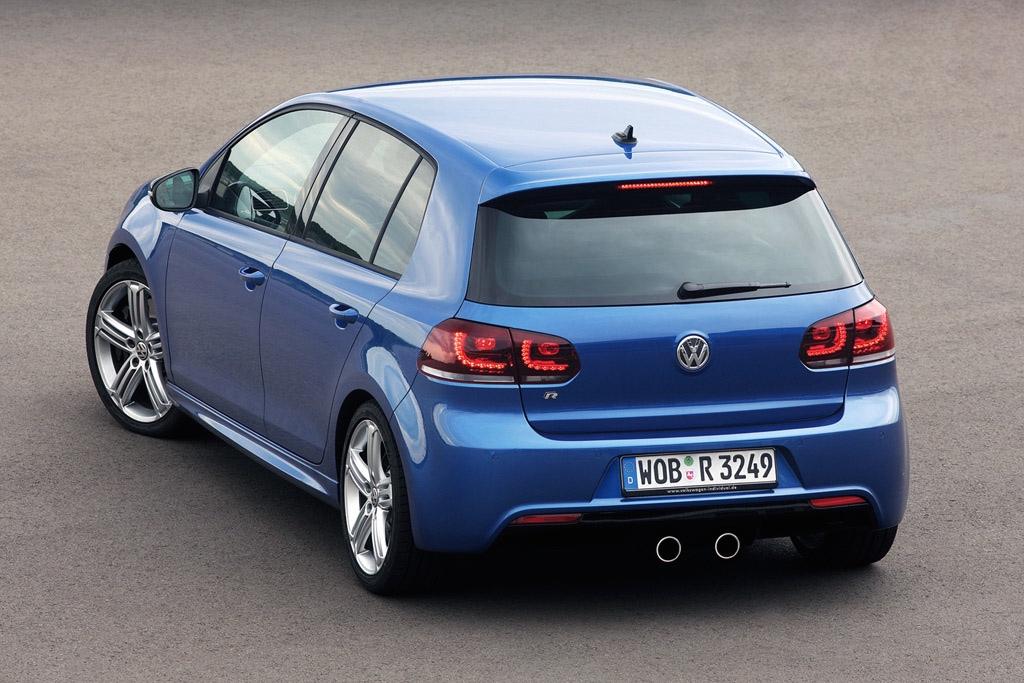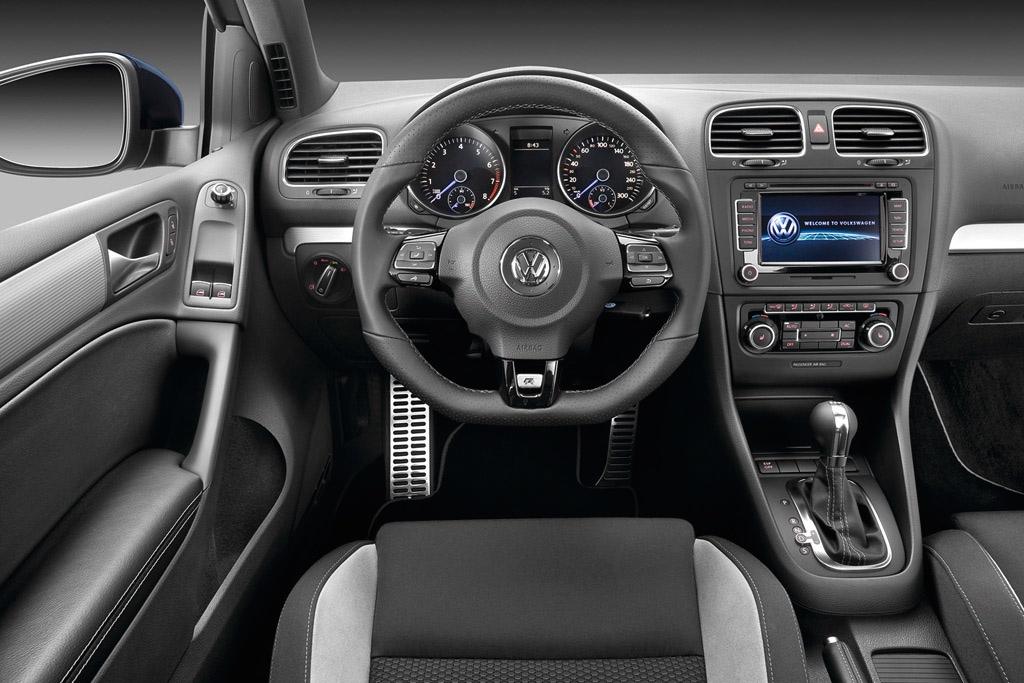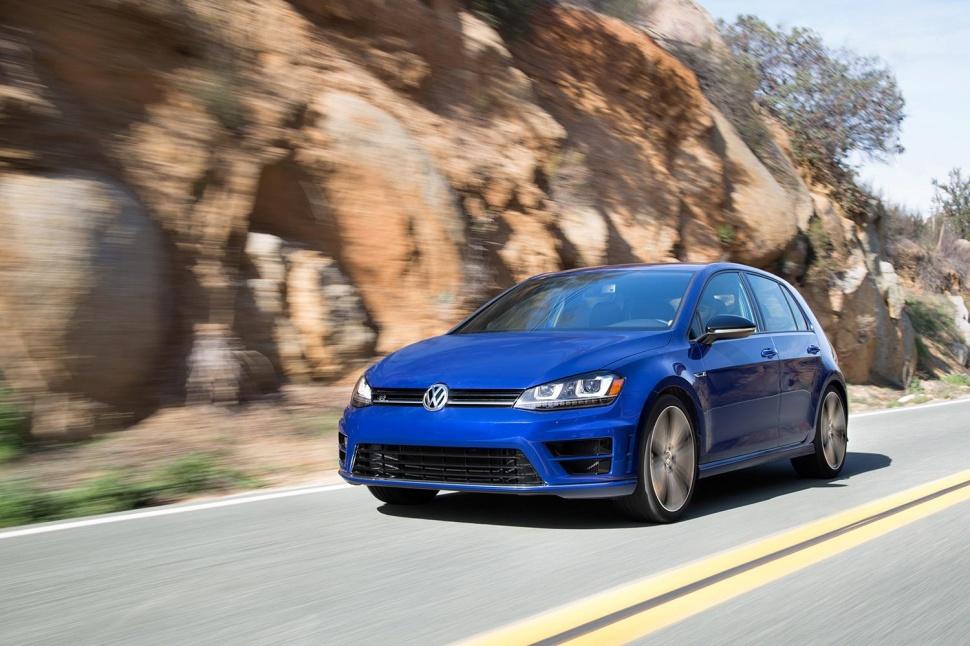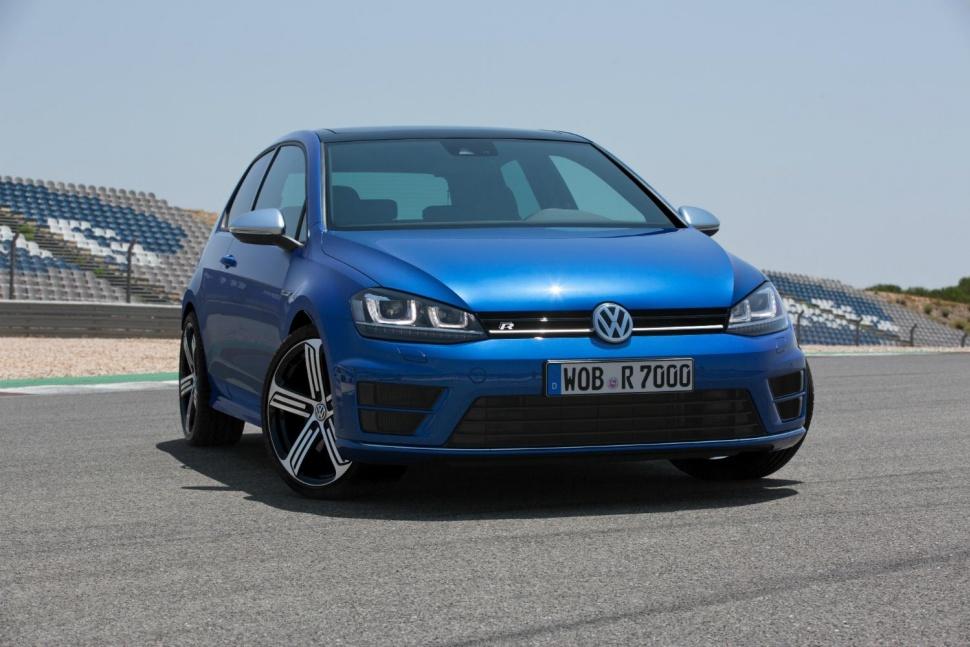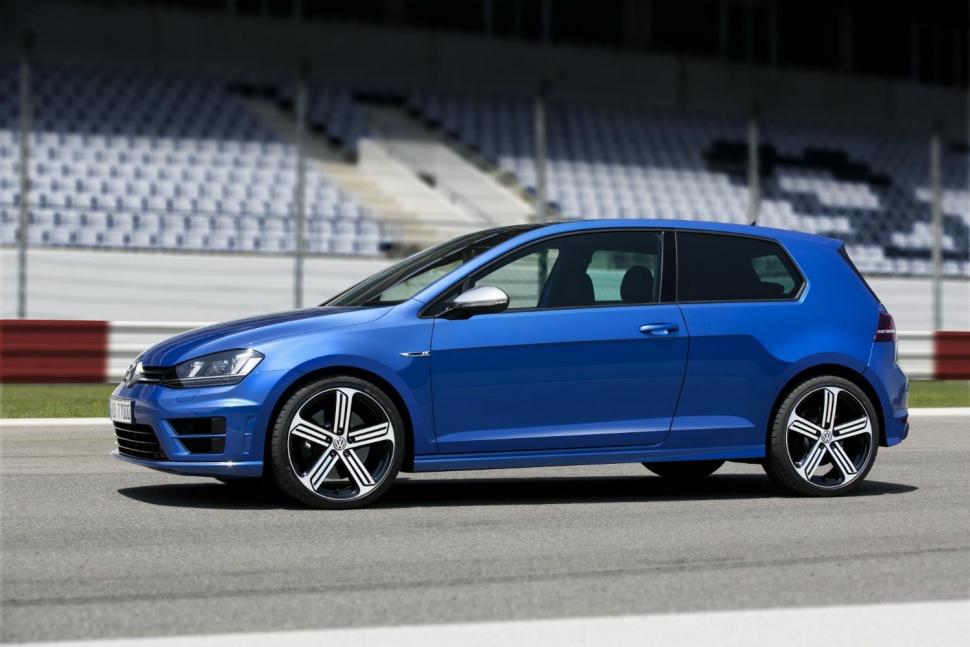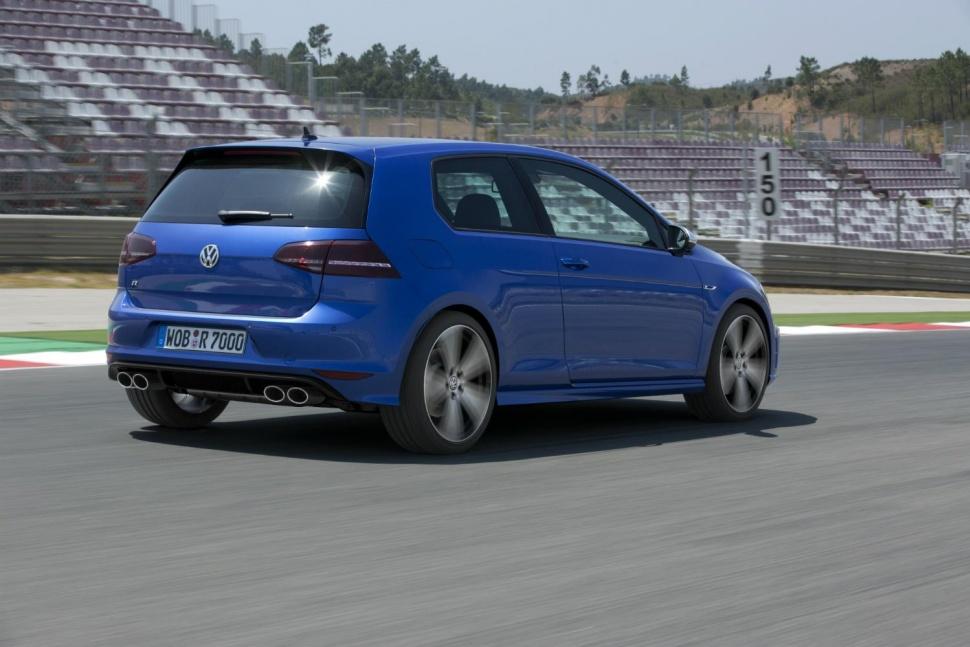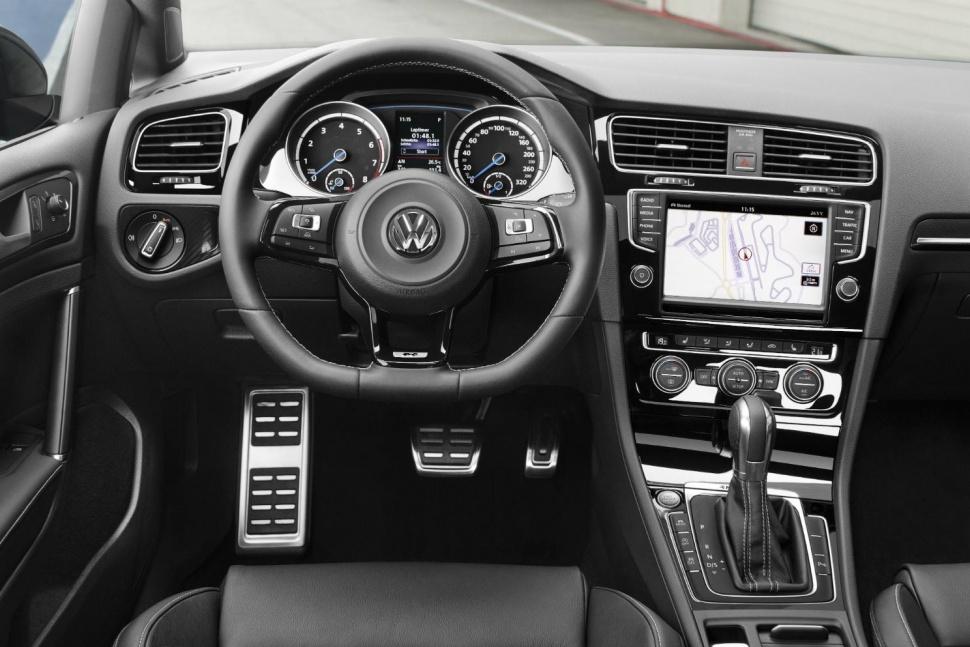History is usually written by the winner, and, as far as hot hatches are concerned, the Volkswagen Golf GTI is king.
The inaugural variant, dubbed the Mk1, first showed up in 1975 at the Frankfurt Motor Show, but it wasn’t just the first GTI. In the eyes of many, the 107-horsepower three-door was the first hot hatch ever built.
The zippy family car would pave the way for countless sporty hatchbacks to come (like our long-term Golf R), giving us a clear answer to the question: “Can a car be practical and fun?”
Forty years in, we can say without question that the answer is an unequivocal yes, and we have the original GTI to thank for it. But what about the buyers who want a hot hatch that is … a bit more? Well, some 13 years ago, VW answered that customer quandary with the ‘R’ variants of the Golf. With all-wheel drive and powerful engines, they took the winning formula of the GTI and turned it up to elf.
Mk4 Volkswagen Golf R32 (2002-2005)
The Golf GTI continued its production run through the 1980s and ’90s, but, eventually, someone at Volkswagen decided that the Golf was plenty “hatch,” but not enough “hot.” So, in 2003, we got the four-wheel drive R32, the 2015 Golf R’s predecessor.
To the untrained eye, the R32 was just a standard GTI with retooled exterior bits, but that all changed when the car was fired up. Instead of the 1.8-liter turbo found in the base car, the R32 housed a 3.2-liter, narrow-angle six-cylinder with tons of grunt and the unmistakably throaty soundtrack to match. Clearly, this was no regular GTI.
The engine channeled a whopping 237 horsepower and 236 pound-feet of torque through its 4Motion four-wheel drive system, allowing it to hit 60 mph in about 6.6 seconds. At 3,350 pounds, the R32 wasn’t any quicker in the straights than the 1.8T-powered Mk4 GTI, but its handling was simply divine.
Here’s what our friends at Car and Driver had to say back in 2002:
“On the open road it feels taut, reassuring, and responsive. In place of the roll and pitch that spoil the standard Golf and GTI, it changes direction quickly and stays flat and encouraging. A series of third-gear bends demands no more than a rolling of the wrists, unless you’re really on the outer limits of its considerable adhesion when it begins to understeer.”
The Golf R32 was also the first series production car to offer a dual-clutch gearbox. That’s right; DSGs weren’t pioneered by Ferrari or Lamborghini but by a Golf.
As you might imagine, VW sold a lot of R32s, about three times as many as predicted. They have also held their value incredibly well, often selling for over $15,000 despite being over 10 years old. Bonus points if you can find a mint condition Deep Blue Pearl model, a color that’s synonymous with the segment to this day.
Mk5 Volkswagen Golf R32 (2005-2009)
The second-generation R32 had a lot to live up to. Styling was revamped with a high-contrast silver grill and an overall rounder shape, the interior was attractive and comfortable, and more power was added.
The VR6 engine was reworked to produce 247 hp, though torque output stayed steady. With its useable powerband, the Mk5 managed to shave a couple blinks its 0 to 60 mph time, accomplishing the feat in 6.5 seconds with the manual and 6.2 seconds with the DSG.
Here’s what Autocar said in 2005:
“So the R32 is fast, but it is also a very accomplished high-speed cruiser. Many cars of this ilk provide rapid acceleration through a combination of short gearing and an engine that’s constantly made to work at high revs, which makes them a real chore over longer distances. Not so the R32, which never feels unduly stressed at motorway speeds thanks to a long sixth gear.”
Unfortunately, when the car made its way to American shores in 2007, the manual gearbox was killed off. The car was heavier as well, and, with a price tag of around $35,000, more expensive than ever. It was still a dream on the autocross track, but nevertheless, sales slowed.
So for the next go around, Volkswagen tried something new.
Mk6 Volkswagen Golf R (2009-2013)
Ah, the modern age. The Golf R officially arrived on September 15, 2009, when the sheets were pulled off at that year’s Frankfurt Motor Show. And while we were sad to see the R32 badge (and lovely VR6 powerplant) go, the R’s smaller, turbocharged engine was a sign of things to come.
The 2.0-liter mill wasn’t just a tweaked version of the GTI’s mill though; it featured a reinforced block, a larger turbo and intercooler, upgraded injectors, beefier camshafts, stronger pistons, meatier piston rings, and more robust connecting rods. The result was 266 hp and 260 lb-ft of torque, making it the most powerful production Golf ever at the time.
Gearheads went crazy at the premise of such a hot Golf arriving in the States, though the enthusiasm was quelled somewhat when the American version was de-powered to 256 hp and 243 torques and now only offered a manual.
Zero to 60 mph came in 5.7 seconds with the six-speed, a significant improvement over the Mk5 R32, and that performance came alongside a comfortable and refined interior missing from its rivals.
Car magazine had this to say back in 2010:
“If you like your hatches hot, but not at the expense of usability, you’ll love the Golf R. It’s just as you’d imagine it would be, a Golf GTi with the wick turned up, and retains the more basic car’s all-round appeal and manages to be even more desirable.”
Mk7 Volkswagen Golf R (2015-Present)
The Volkswagen Golf R (and the R32 that came before it) always had a leg up on their Japanese competition in terms of sophistication, but there was always a noticeable power gap between them.
For the Mk7 model Golf R, Volkswagen literally cranked up the boost, releasing a 292-hp Golf R that could finally compete with the likes of the WRX STI.
Now, it’s no rally car, but damn if it isn’t fun. It’s lighter, more powerful, and more efficient than its predecessor, with the cozy cabin and exclusive bucket seats to match. 0 to 60 mph comes in just 4.9 seconds with the DSG, and the R eats up twisty switchbacks like a bowl of sauerbraten.
Better yet, the 2016 model will offer a six-speed manual (currently available in Europe) alongside the current dual-clutch. Having piloted the Euro-spec model at the Golf R’s first drive event in San Diego, I can tell you that the best Golf has probably yet to come.
Here’s what we had to say when we first drove the Golf R in February:
“Brake, turn in, smash the apex, throttle out, and the Mk7 proudly shows you its improvements. Like most Golfs, it’s loads of fun, but also drama free, with the front-biased 4MOTION system sending up to 50 percent of the power to the rear if needed. The brakes are the same units you’ll find in the GTI Performance Package, but this time they have ‘R’ stamped on the calipers. That means they’re better, let’s say.”
Do you have a favorite iteration of the mighty Golf? Is it the smooth and modern acceleration of the new model, or do you prefer the rough and tumble inclinations of the original R32? Let us know in the comments.
